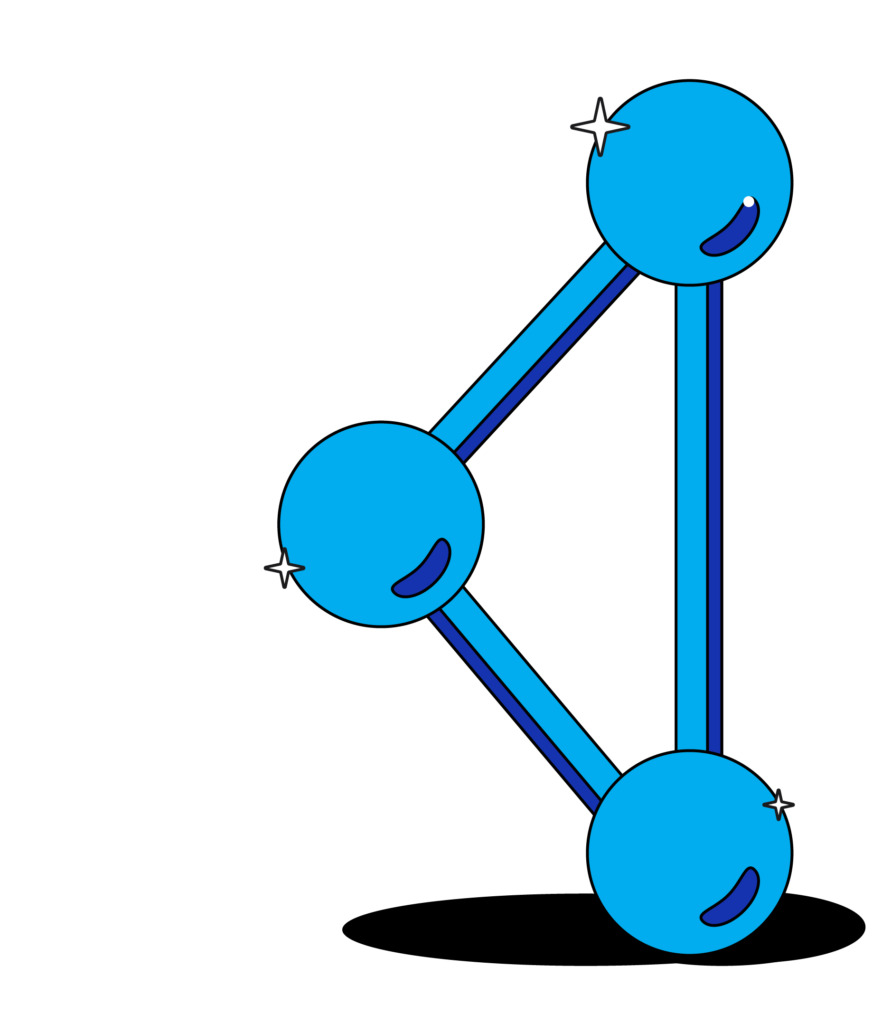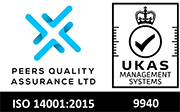At TMW, we believe that the key to delivering business advantage for our clients is truly understanding human decision-making and behaviour. That’s why all of our clients gain access to UNLIMITED’s Human Understanding Lab, which plugs behaviour-led science into the heart of our marketing solutions.
The Lab is a team of expert neuroscientists, research practitioners, trends analysts, data strategists, and behavioural scientists, all employed across TMW and our sister UNLIMITED agencies. By blending data with modern research methods, we evaluate how humans interpret, perceive and feel the world around them, to deliver actionable and measurable insights rooted in human behaviour.
We’ll be taking a look at the different disciplines within the Human Understanding Lab – finding out a bit more about them and why they can help us enjoy a better understanding of the world and drive more effective marketing.
First up, the importance of unlocking consumer trends, by our Head of Trends, Nick Chiarelli.
Finger on the pulse
There’s no doubt about it – trends are trendy within the marketing community. But what exactly are they, where do they come from, how do you find them and, most importantly, how do you use them to drive business advantage?
What are trends?
Trends can mean different things to different people. Even within the niche trends subset of the broader insight industry, there’s a huge variation in terminology and usage, which doesn’t help anyone looking for clarity, or looking to compare points of view across trends observers. They can be mega. Or macro. Or micro. They can be cross-category or category-specific. They can be short-term or longer-term. Confusing, right?!
To explain our point of view at UNLIMITED, let’s start at the beginning.
Trends, however you define them, are fundamentally about change or momentum. As such, they don’t suddenly spring up out of nowhere. They are reactions to the changing world around us. A common framework for looking at these drivers of change is PESTLE (although there are variations such as PEST or STEEP that look at fewer factors). When something significant changes within the Political, Economic, Social, Technological, Legislative or Environmental landscapes, both businesses and consumers may change in response. When the economy goes pear-shaped (as most forecasters suspect it’s just about to), businesses may respond by laying off workers, while consumers may respond by postponing major purchases or by using price-comparison services. These responses naturally fall under the definition of trends.
For us, therefore, a trend is an observable change in attitudes or behaviour in response to changes in the broader cultural landscape. From this starting point, you can then make your trends more specific, in terms of their level of focus. Just to take an example:
- Driver: Developments in healthcare, housing, sanitation and education and changes in nutrition and the movement of work away from heavy manual labour are reducing early and mid-life mortality.
- Macrotrend: As part of ongoing social change we have seen changes in life expectancy – the so-called Ageing Society.
- Trend: One implication of living longer is that consumers nowadays are less and less happy to be marketed to based on their age alone, in a trend that we can call Ageless Living.
- Microtrend: We’re seeing the emergence of pro-ageing as a movement, in everything from magazines and fashion to cosmetics.
Whatever your terminology of choice, the key challenge is to ensure that you have a way of tracking consumer change, recognising when a change is significant or not, and deciding whether to and how to leverage that change to your advantage.
Why do trends matter?
We’re a commercial operation. Our focus is on giving our clients every advantage in the battle for consumer hearts, minds and spend.
For that reason, we’re talking about either consumer trends or business trends; that is to say, trends that have a potential for commercial application, since they signify some underlying consumer need, to which marketers can react by developing a new product or service, by messaging their audiences via new channels, or by tweaking messaging to be more appropriate and motivational.
Trends are about relevance and opportunity: Finding data-driven insights that are appropriate and timely. Spotting a gap in the market and then quickly moving to fill that gap. Many of the successes of our age, from Apple to Amazon, from Netflix to Uber, have recognised and then aggressively implemented this truth. You can even see this evidenced in more divisive areas, from the Brexit campaign to the current President of the United States. Regardless of what you think of either, both illustrate the effectiveness of single-mindedly pursuing a strategy once you have identified an opportunity.
Trends are about the future: Trends are not just about the here and now. There’s a specialist branch of the trends industry that’s all about rapid exploitation of the zeitgeist; from Heelies to Fidget Spinners, plenty of businesses have turned a quick profit around short-termism. But, major corporations are generally more concerned with changes that will persist for several years. Identifying trends early on maximises both R&D time but also the duration of the revenue stream.
“Don’t follow trends, start trends.”
Frank Capra
Of course, this is easier said than done. But, even for brands that weren’t first to market, there are plenty of opportunities – Apple launched neither the first music player nor the first smartphone. Products may succeed because they’ve ironed out the glitches of the market makers or because they improved upon them with better UX, design, pricing, etc. Trends are not just about blue-sky innovation.
How do we identify trends?
“Follow sound business trends, not fashion trends.”
Janice Dickinson
For many, trends are a story and no more. Some take a very journalistic approach, weaving a compelling narrative around an emergent behaviour or opportunity. That can be fine if all you are looking for is a jolt of inspiration.
For us, Human Understanding is at the heart of who we are. So, we like to go further, both with how we identify and validate trends but also by ensuring that trends are not the whole story. Our trends team works very closely with our best-in-class insight division, ensuring that not only do we know what the trends are but also why they are emerging. And this is both from the point of view of the broader social context (which our colleagues at Walnut monitor monthly through their Understanding the Nation tracker) and by looking at the behavioural science underpinning consumer change and seeing the impact on sales and customer satisfaction measures (through our analytics expert colleagues at Realise).
Going deeper than storytelling is also about triangulation. When multiple data sources all point you in the same direction, you can be more certain you’re onto something meaningful. That’s why we won’t put pen to paper, or mouse to PowerPoint slide, until we’ve looked at an issue from all angles, leveraging a variety of sources, including our own internal assets, intelligence services we subscribe to and a thorough review of the available literature and recent product launches and marcoms campaigns
How do we leverage trends for our clients?
We believe passionately that the best work starts from profound, insightful and diverse Human Understanding, of which trends are one part.
For the last 18 months or so, I have been heading up our Trends team. I came to the role with twenty years or so of trends experience, which is more or less the entire lifespan of the trends industry as an offshoot of the mainstream insight sector, having previously held senior positions at major and well-respected trends consultancies, most recently Foresight Factory. Since joining, I have been tasked with spearheading our trends offering, across several activity streams:
- Trends analysis: Auditing and then prioritising the key trends affecting a particular product sector, client brand or consumer group.
- Thought leadership pieces and public speaking opportunities, for the group as a whole and for specific agencies within our various divisions (Marketing, Communication and Digital, as well as Data and Insights).
- Internal and client-facing workshops designed to select the right trends to focus on and to apply those trends to key business challenges.
The impact of COVID
Over the past three or four months, life has obviously taken a somewhat unexpected turn. Some have used this as a stick to beat the trends industry with. Who, they ask, identified a disease like COVID as a threat when they were putting together their 2020 look-ahead pieces together at the back end of last year? The truth is that, while pandemics have long been recognised as a severe threat to society, no-one knew which particular virus would emerge as the key threat, nor when that would happen. As such it is a true disruptor. With this in mind, it’s vital not to lose faith in the basic approach but merely to make sure you are recognising its importance in all the work you do from that point forwards, assessing how it is affecting (i.e. accelerating, decelerating or modifying) the existing trends you were tracking, and rapidly identifying the new needs it is creating. We’ve been endeavouring to do that via three key content threads that you can follow on our UNLIMITED blog:
- Pivoting in Crisis: tracking early responses from both businesses and consumers as they struggled to adapt to the new reality of COVID-19.
- ReUnited Kingdoms: As life under lockdown became the Temporary Normal, businesses started to imagine what the world should look like “afterwards” and ask how we can build on new behaviours and start to create a new better future.
- Big Digital Recovery: looking specifically at the role of technology in keeping society functioning under the severe challenges of lockdown and what lessons can be learned for the future.

This article was written by Nick Chiarelli,
Head of Trends at UNLIMITED.


